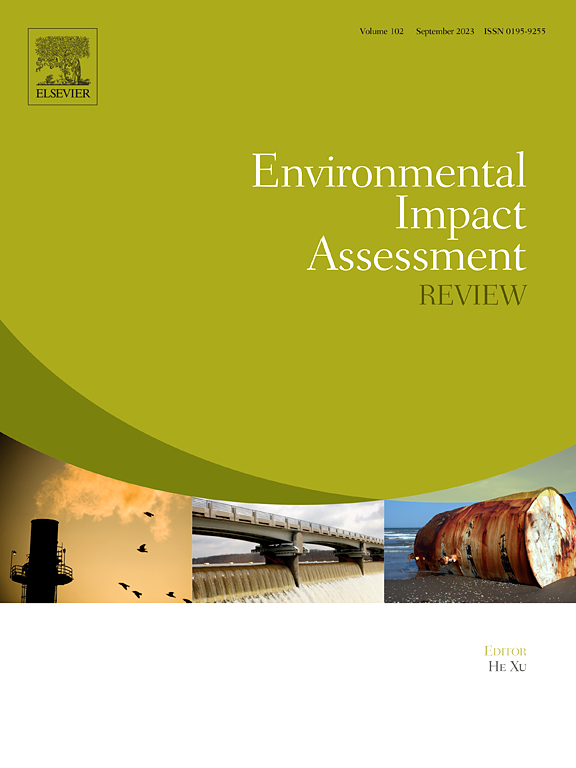Evaluating habitat isolation driven by future urban growth: A landscape connectivity perspective
IF 9.8
1区 社会学
Q1 ENVIRONMENTAL STUDIES
引用次数: 0
Abstract
Natural habitats in rapidly urbanizing regions face significant human disturbances due to urban development. However, the extent to which future urban growth will further isolate these habitats remains inadequately explored. To address this gap, we developed a comprehensive framework that integrates habitat isolation assessment with future urban growth models, using the Nanjing Metropolitan Area from 2020 to 2050 as a case study. We employed Morphological Spatial Pattern Analysis (MSPA) to delineate natural habitat patches and identified urban pixels causing isolation through an ecological network approach. The Isolation Effect Index (IEI) and the Isolation Degree Index (IDI) were used to quantify the isolation impacts of urban areas at the pixel scale and the degree of isolation for individual habitat patches. Utilizing the Patch-Generating Land Use Simulation (PLUS) model, we projected land use changes under five Shared Socioeconomic Pathways (SSPs) to analyze the dynamics of IEI and IDI from 2020 to 2050. Our findings reveal that urban pixels in the central area are hotspots for causing isolation, severely impacting surrounding natural habitats. Increases in habitat isolation are primarily driven by newly-added urban pixels, particularly from low expansion intensity, indicating that non-intensified urban expansion exacerbates habitat isolation. This study quantifies the habitat isolation caused by future urban growth, with the isolation mitigation strategies are both essential for understanding human impacts on natural habitats and improving ecological protection policies.
未来城市发展驱动的生境隔离性评价:景观连通性视角
快速城市化地区的自然栖息地因城市发展而面临严重的人为干扰。然而,未来的城市增长将在多大程度上进一步孤立这些栖息地仍未得到充分探讨。为了解决这一差距,我们开发了一个综合框架,将栖息地隔离评估与未来城市增长模型相结合,并以南京大都市区2020 - 2050年为例进行了研究。我们采用形态空间格局分析(MSPA)来划分自然栖息地斑块,并通过生态网络方法识别导致隔离的城市像元。采用隔离效应指数(IEI)和隔离度指数(IDI)在像元尺度上量化城市区域的隔离效应和单个生境斑块的隔离程度。利用斑块生成土地利用模拟(PLUS)模型,对5种共享社会经济路径(ssp)下的土地利用变化进行了预测,分析了2020 - 2050年中国的IEI和IDI动态变化。我们的研究结果表明,中心地区的城市像素是造成隔离的热点,严重影响周围的自然栖息地。生境隔离度的增加主要是由新增的城市像元驱动的,特别是由低扩张强度驱动的,这表明非强化的城市扩张加剧了生境隔离度。该研究量化了未来城市发展导致的栖息地隔离,并提出了缓解隔离的策略,这对于理解人类对自然栖息地的影响和完善生态保护政策至关重要。
本文章由计算机程序翻译,如有差异,请以英文原文为准。
求助全文
约1分钟内获得全文
求助全文
来源期刊

Environmental Impact Assessment Review
ENVIRONMENTAL STUDIES-
CiteScore
12.60
自引率
10.10%
发文量
200
审稿时长
33 days
期刊介绍:
Environmental Impact Assessment Review is an interdisciplinary journal that serves a global audience of practitioners, policymakers, and academics involved in assessing the environmental impact of policies, projects, processes, and products. The journal focuses on innovative theory and practice in environmental impact assessment (EIA). Papers are expected to present innovative ideas, be topical, and coherent. The journal emphasizes concepts, methods, techniques, approaches, and systems related to EIA theory and practice.
 求助内容:
求助内容: 应助结果提醒方式:
应助结果提醒方式:


